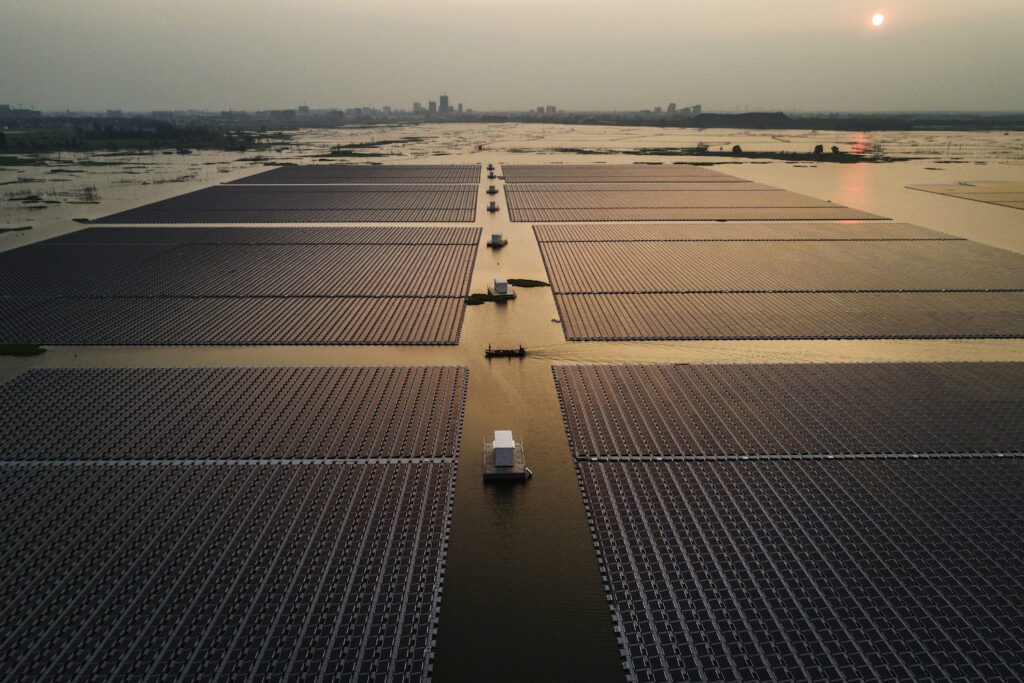Green technology in China

HUAINAN, CHINA - JUNE 13: Chinese workers ride in a boat through a large floating solar farm project under construction by the Sungrow Power Supply Company on a lake caused by a collapsed and flooded coal mine on June 13, 2017 in Huainan, Anhui province, China. The floating solar field, billed as the largest in the world, is built on a part of the collapsed Panji No.1 coal mine that flooded over a decade ago due to over-mining, a common occurence in deep-well mining in China's coal heartland. When finished, the solar farm will be made up of more than 166,000 solar panels which convert sunlight to energy, and the site could potentially produce enough energy to power a city in Anhui province, regarded as one of the country's coal centers. Local officials say they are planning more projects like it, marking a significant shift in an area where long-term intensive coal mining has led to large areas of subsidence and environmental degradation. However, the energy transition has its challenges, primarily competitive pressure from the deeply-established coal industry that has at times led to delays in connecting solar projects to the state grid. China's government says it will spend over US $360 billion on clean energy projects by 2020 to help shift the country away from a dependence on fossil fuels, and earlier this year, Beijing canceled plans to build more than 100 coal-fired plants in a bid to ease overcapacity and limit carbon emissions. Already, China is the leading producer of solar energy, but it also remains the planet's top emitter of greenhouse gases and accounts for about half of the world's total coal consumption. (Photo by Kevin Frayer/Getty Images)
